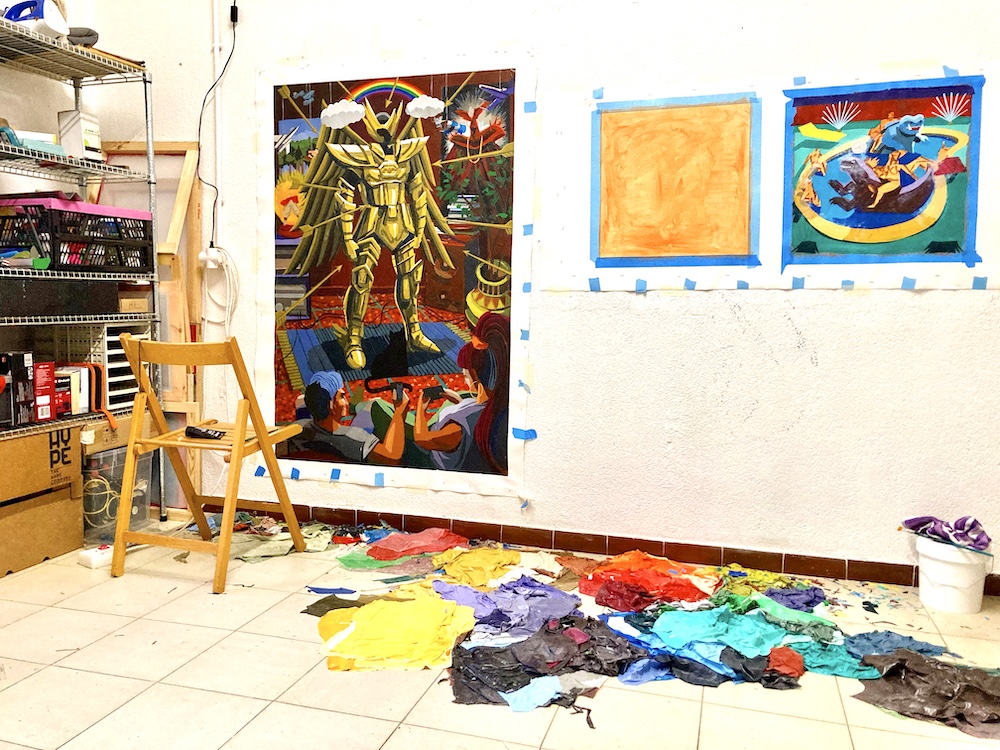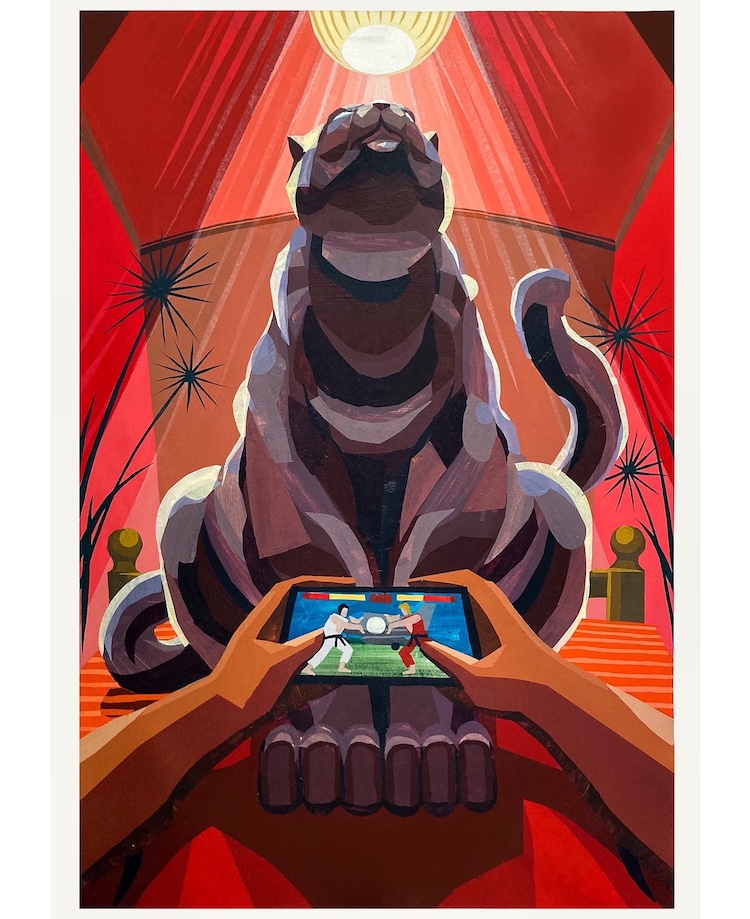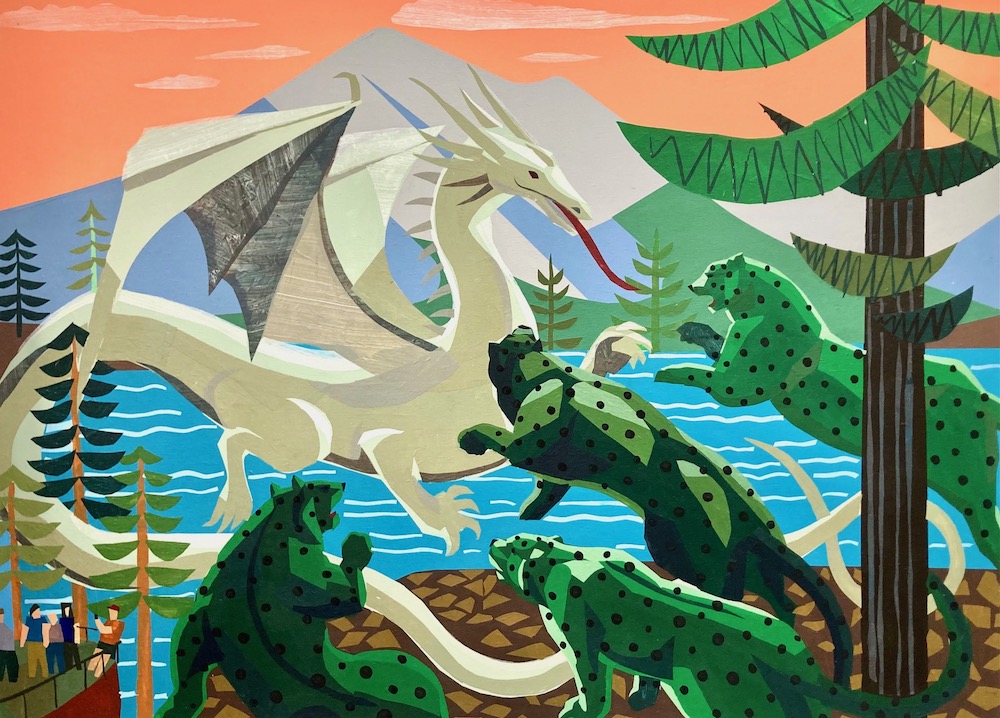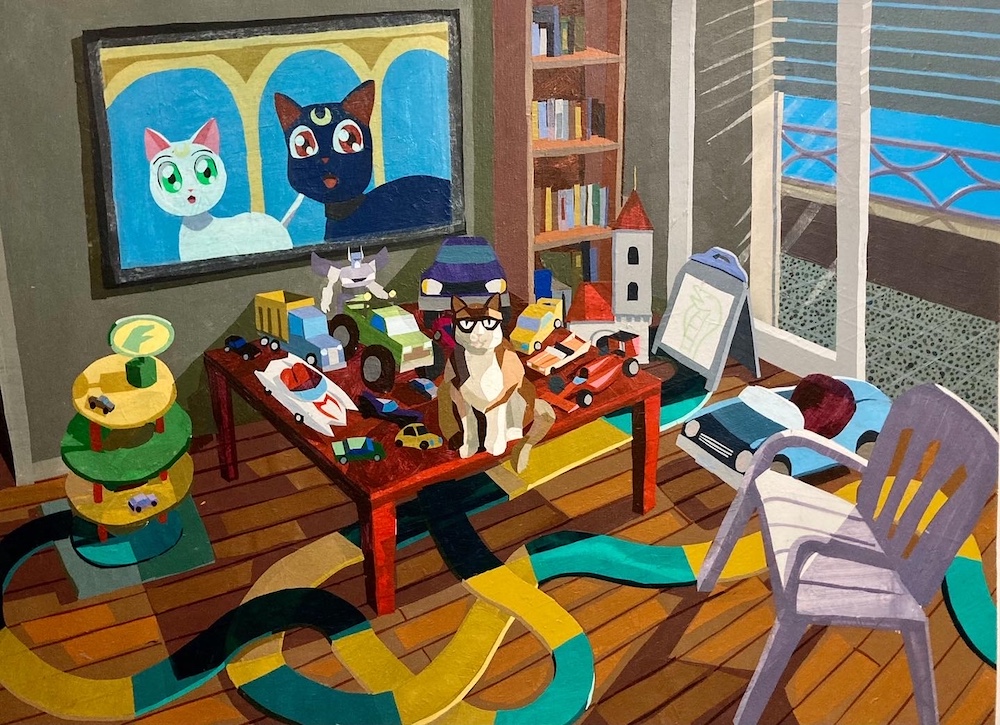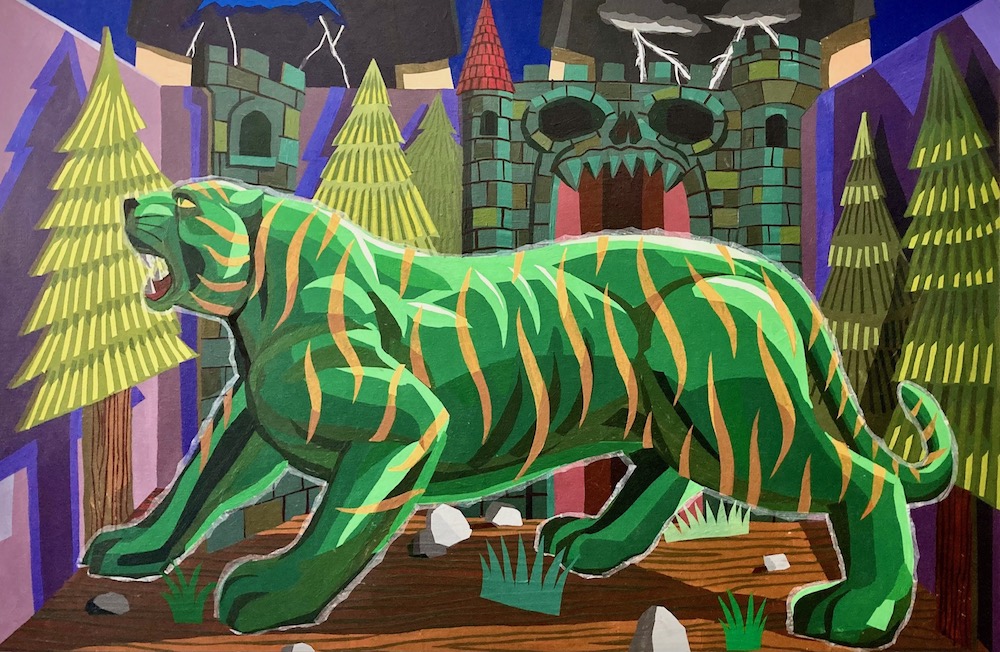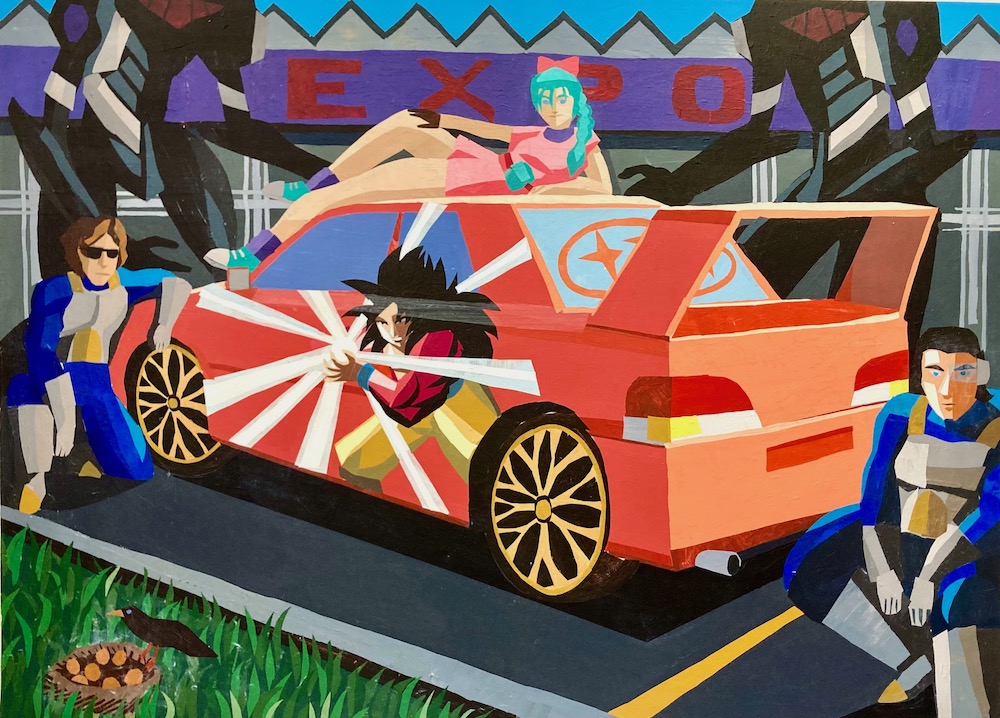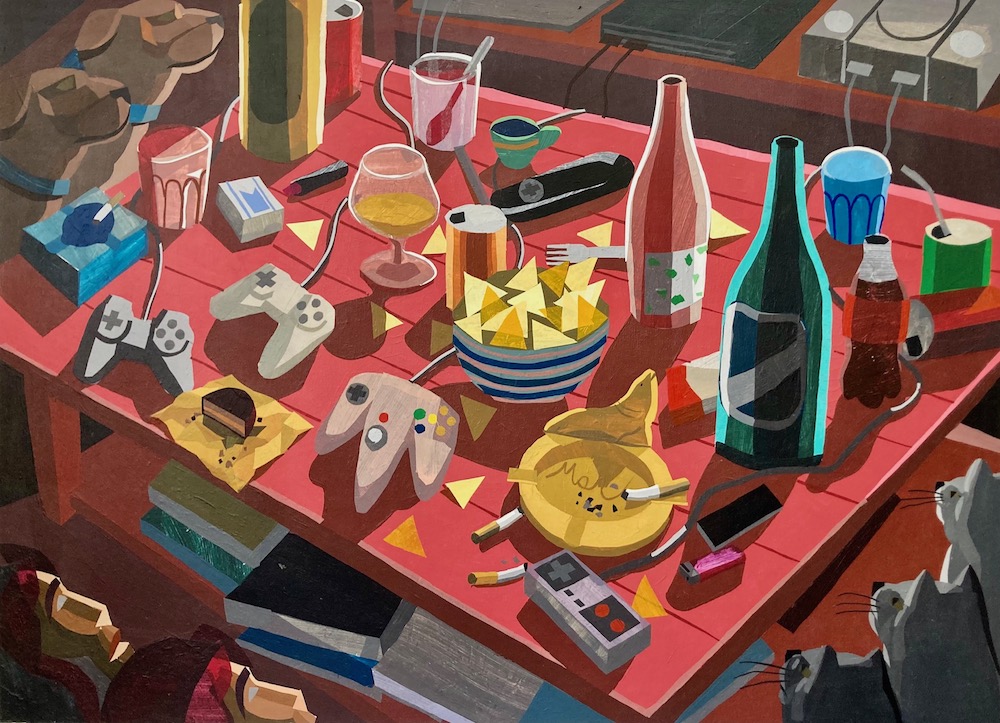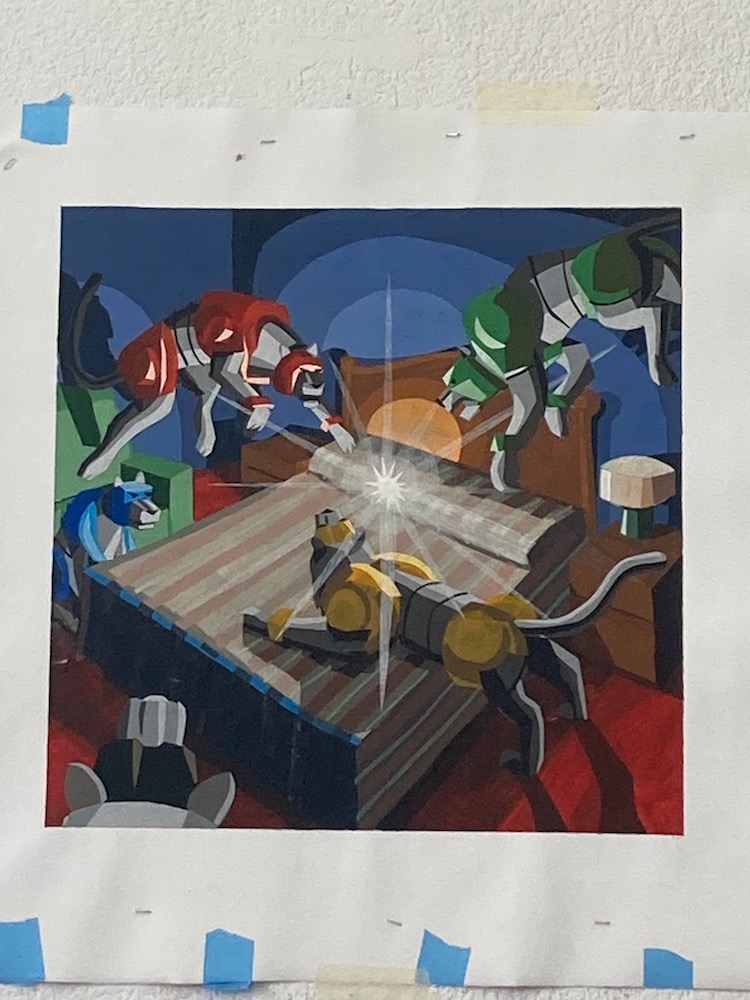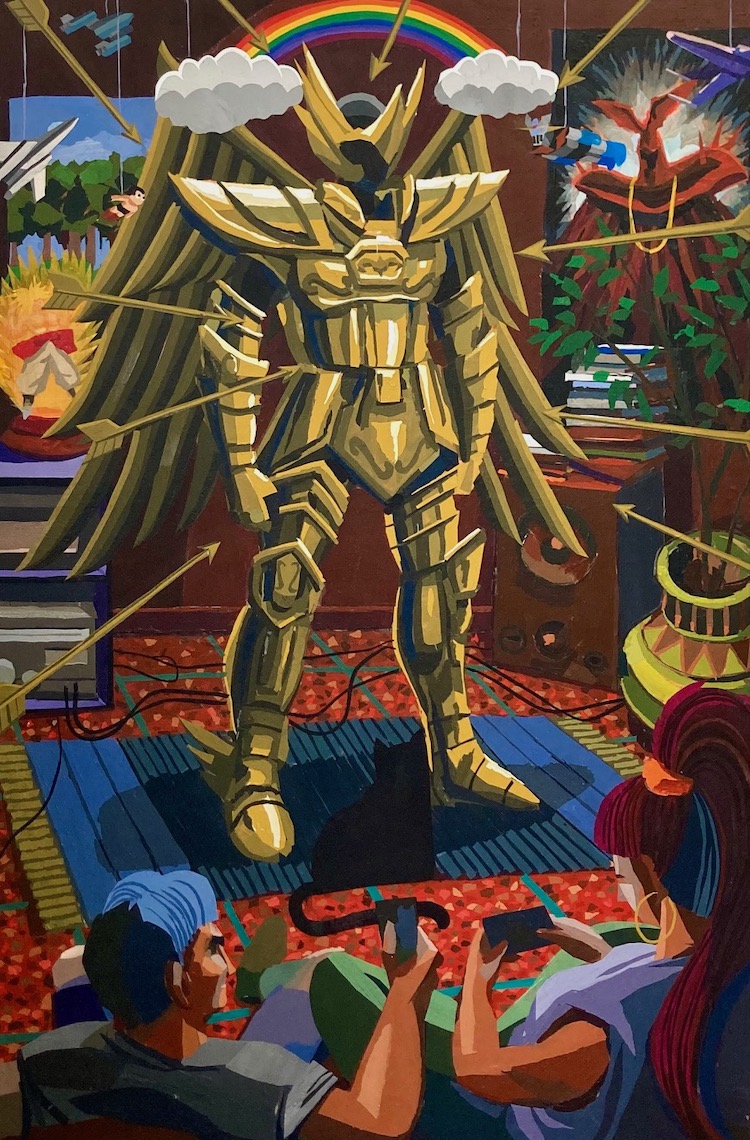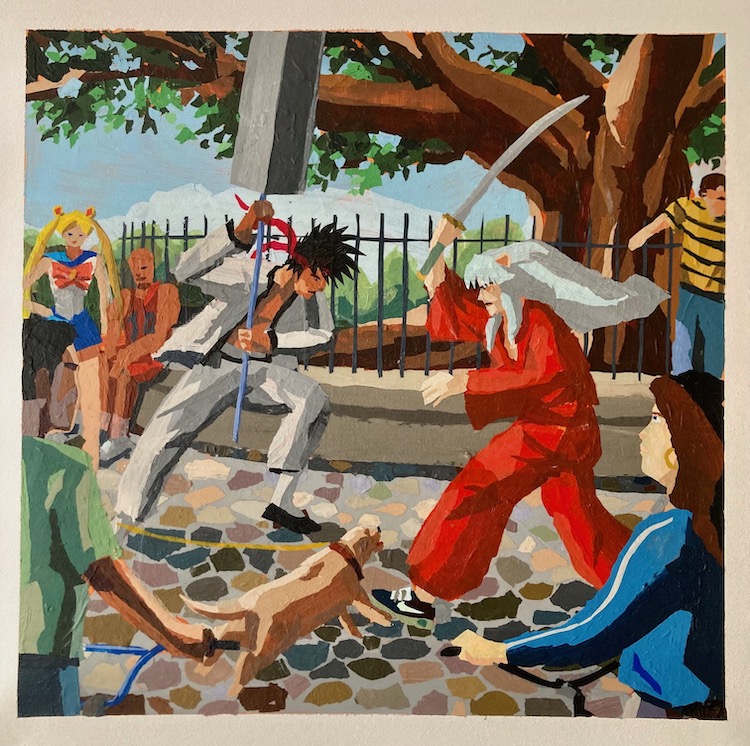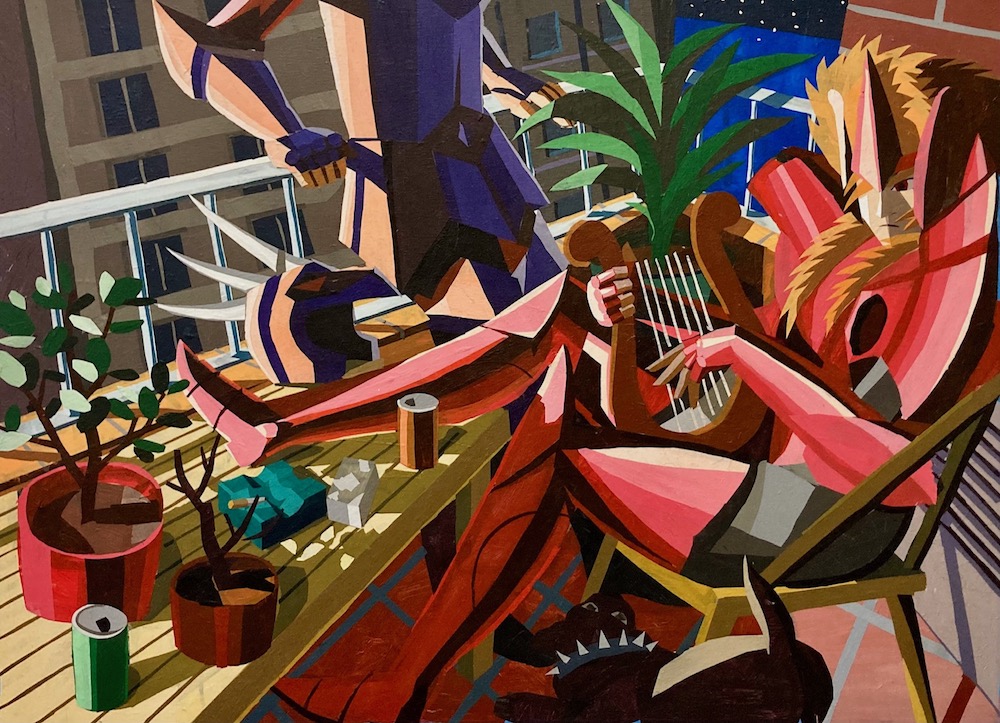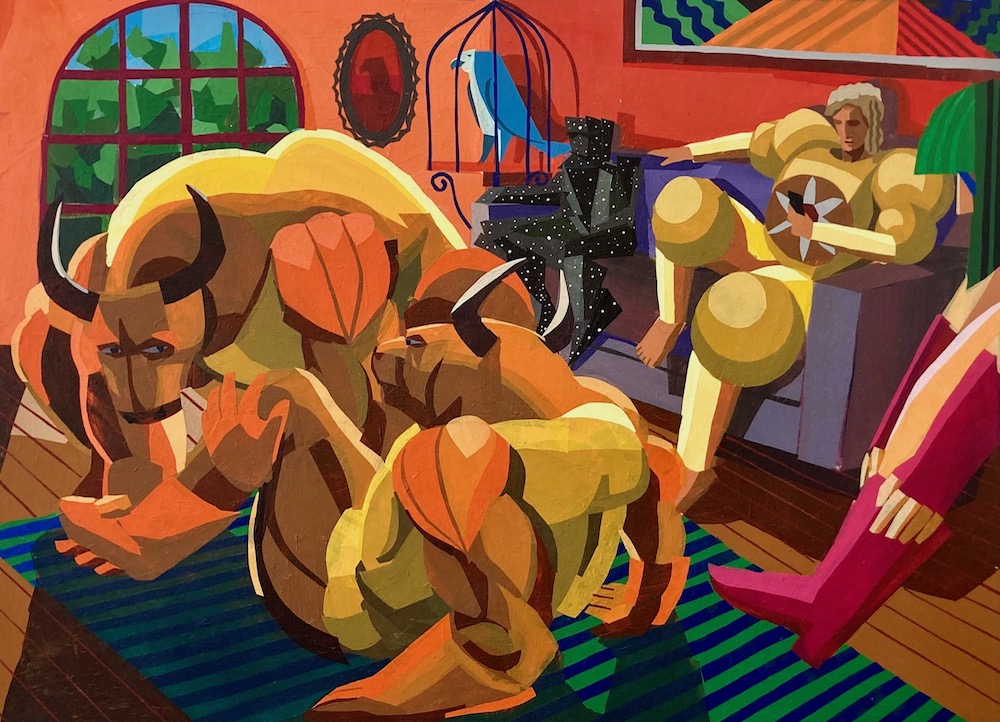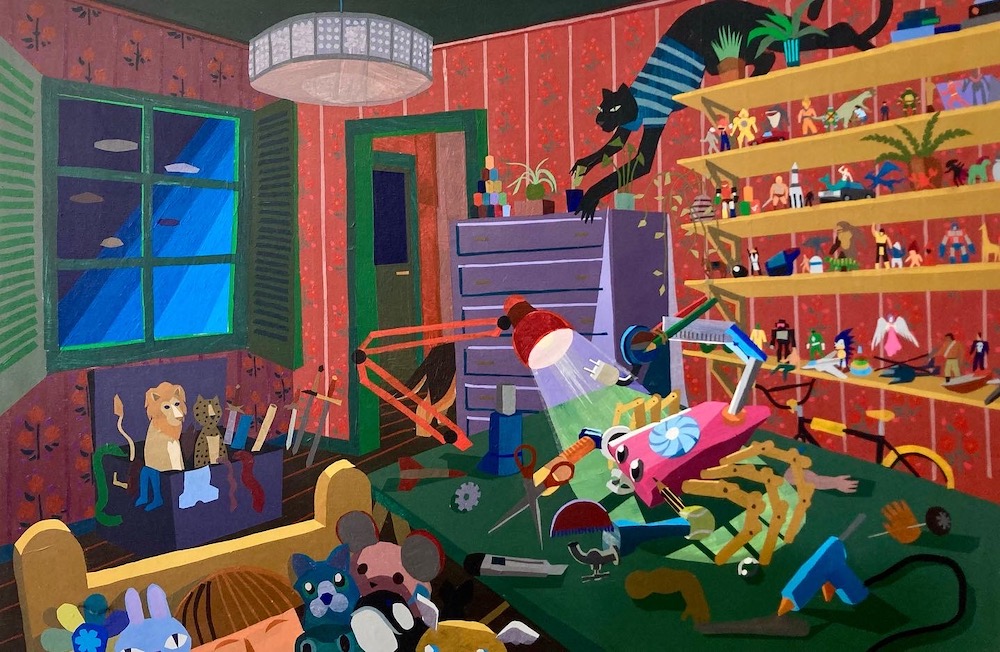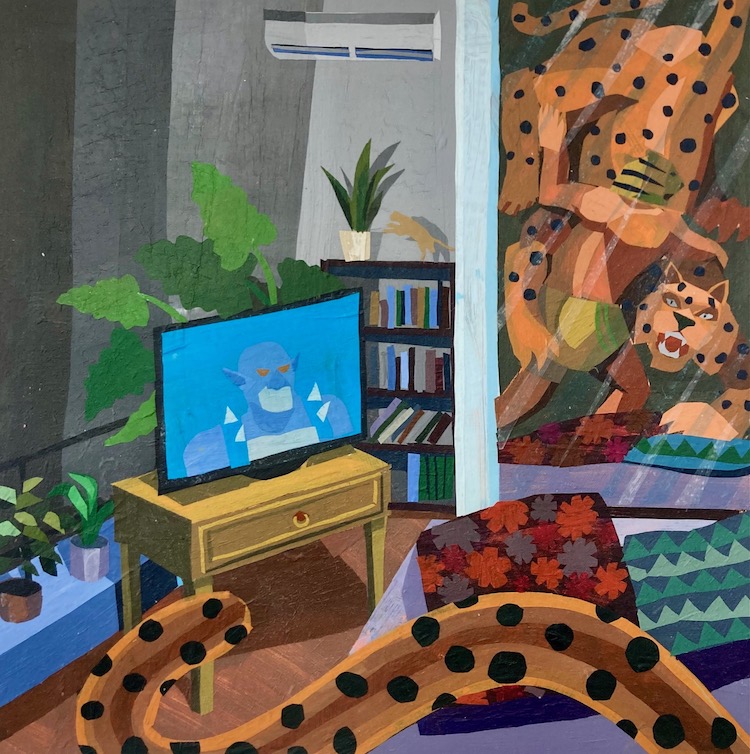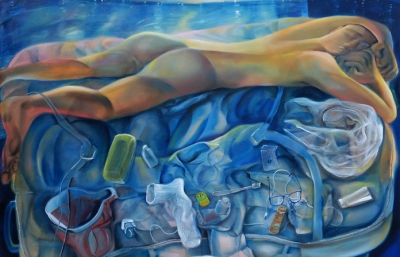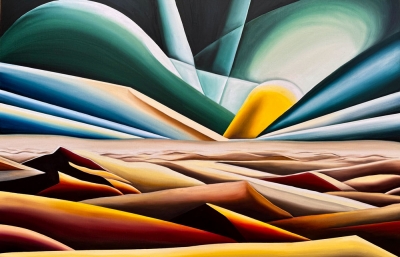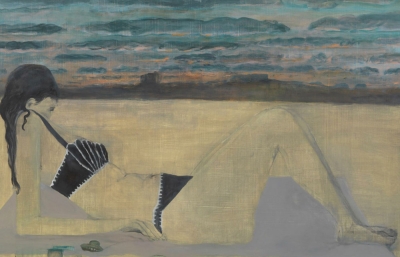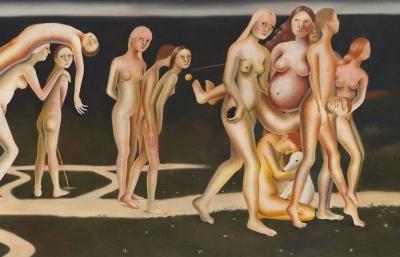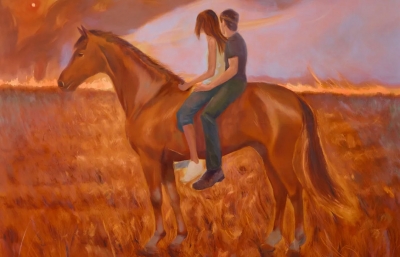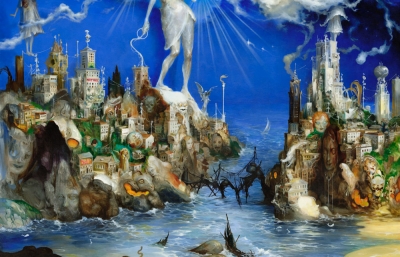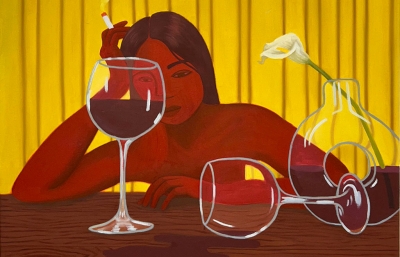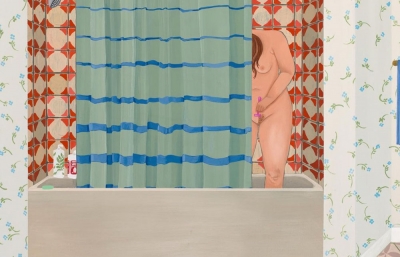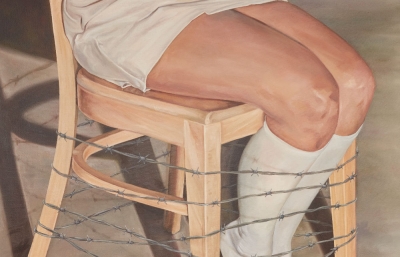When you look back onto the 20th century, there are two names of artists who practiced within the collage medium that, in a sense, have a deep influence over the works of Franco Fasoli. I think of the Dadaist and the eloquence and almost surreality in the works of Max Ernst and an artist who later was influenced by his works in Robert Rauschenberg. Where Ernst at times was playful and almost absurd, displacing the viewer with seemingly disparate and yet coherent thoughts, Rauschenberg stitched, sewed, combined and reinvented the medium into a painting. Rauschenberg told the story of culture as it was at the time; social unrest, politically volatile, media enlargement, pop-cultural explosions, the American Dream and, therefore, the American hegemonic push. Ernst saw that everything was art, and everything could be placed together. They were kindred spirits who took art into different directions.
I bring these two artists up in relation to the works of Franco Fasoli because of the creation of his own works. There is a redefining of a medium and the telling of a personal narrative that is striking. What people perhaps got wrong about Dada or Neo-Dadaist or even the Pop Artist is that even as they were toying with what we consider High Art of just plain Art with a capital A is that there was something inherently personal in the works. Collage may seem like an almost anti-self, something more created at a distance and trying to make sense of a larger picture of life, Ernst and Rauschenberg dug deep into something more humane and eloquent when it came to self. Fasoli is found here, pushing a medium of collage into a personal narrative but also a medium to be flexible, malleable, evolving and during a historic moment of constant uncertain shifts (like the WW1 era of Ernst and the post WWII world of Rauschenberg), letting the work speak to the very moment it's made in. Rauschenberg once said, “I think a painting is more like the real world if it's made out of the real world.” So begins the new body of work by Franco Fasoli in 2023.
Years ago, as a growing international street art movement transformed our imaginations of what a mural could potentially be, an artist on the streets of Buenos Aires was demonstrating how historic social realism and contemporary street works could exist in harmony. Franco Fasoli, known then as JAZ, made the street a stage for which his art could perform. His history in building theater sets lent his work to this sort of dynamic and scale; he could take a story he had written, visually, and make it interact with a city in ways many artists could not. His uniqueness was profound. His practice was a juxtaposition of eras and techniques, as street savviness that was intertwined with his love of fine art. In theater design, he made what was stationary come to life with movement and energy, expanding the viewer's imagination and creating fantasy worlds that transported the senses to someplace else, somewhere else.
This became a stepping stone to his studio practice, which is where we find him now, with Parallel Realities being a culmination of his experimentations into collage and sculpture. Collage was the perfect and harmonious direction for his passion. Here, he could combine materials and create layers of movement and history to each canvas. He once said, “I find collage as a juxtaposition of all these things, a more formal way to work with color, paint and scissors… all these clashing situations, but at the same time, a fragile mural hanging by wires.”
As the world seems to both emerge from and diverge into the most confounding moments in recent memory, Fasoli is using the collage technique to think about his past, present and future, not just a personal journey but as a universal theme of what everyone began to face during the pandemic. Parallel Realities sees the artist working more with overlapping imagery, mixing his own childhood memories of Otaku subculture that helped define his life in Latin America in the 1990s. An often overlooked phenomenon of globalization is the ways in which artistic subcultures find a home in the most faraway of places. This was the case for how anime emerged as a popular and influential art form in Latin America. For a young man in Argentina, growing up a decade removed from a tumultuous era of the Lost Generation, escapism was pertinent and a necessary tool for survival. These are the histories that Fasoli comes from, and his unique crafting of collage works question what it is we see as fiction and reality.
“These works are like a small portal to another dimension,” Fasoli says of the works in Parallel Realities. And throughout the works, there is a sense that Fasoli himself if trying to time-travel, to re-encounter his past self and the feelings and inspirations he had as a young man. His recurring tiger character emerges, an almost metaphorical self trying to protect an identity, or enlarge one through a fantastical beast. There is a continual thread of video game and anime culture throughout, where the game and cartoon characters burst from the screen and submerge themselves into Fasoli’s life.
Memory has an interesting way of becoming, for lack of a better term, a collage of what it is we wanted our past to be and what we can summon up in our minds as to what it actually was. Fiction and reality, fantasy and truth. The beauty in Fasoli’s work is that you can see these personal assessments of self play out into the work, a story of his life that is still developing. Memory isn’t something that is perfect, but Fasoli explores how we can make memories become larger than life.
Text by Evan Pricco, August 2023
VINS Gallery in Taipei is pleased to present PARALLEL REALITIES, a new solo exhibition of works by Barcelona-based, Argentinian-born artist, Franco Fasoli. This is the artist’s first exhibition with the gallery.

